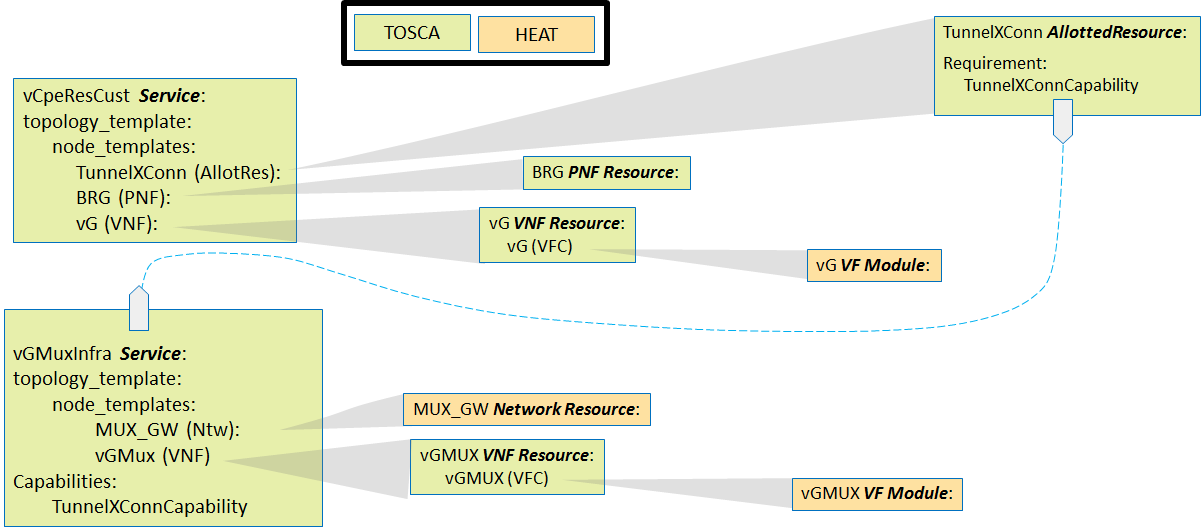...
- A BRG, which will be a physical device (PNF) dedicated to the customer's service instance.
- A vG, which is a virtual network function that is dedicated to the customer's service instance.
- A "slice" of functionality of the vGMUX, which provides a "cross connect" function between the BRG and vG. We use the term "slide" informally to convey the sense that something (capacity) is consumed and dedicated (configuration record) in the vGMUX for this customer's service instance. The way in which SDC models a "slice" of functionality of a VNF is through the "Allotted Resource" construct, because what is being consumed by the customer's service instance is an "allotment" of capacity and configuration from the underlying vGMUX. We will use the termrefer to this as the TunnelXConn Allotted Resource.
Because in this sense the vGMUX is providing a "service" an allotment of which is being consumed, we consider the TunnelXConn Allotted Resource to be taken from the vGMUX's Infrastructure Service, vGMuxInfra.
It is true that in the "real world" the BRG will be a physical device, but for purposes of this use case we will emulate such a physical device via a VNF, the vBRG_EMU VNF. We will instantiate this VNF separately from the Customer's service instance, and model it as a separate service: BRG_EMU Service. Upon instantiation of a BRG_EMU service instance with its vBRG_EMU VNF, that VNF will begin acting like its "real world" PNF counterpart.
As a Release 1 ONAP "stretch goal", we will also attempt to demonstrate how a standalone general TOSCA Orchestrator can be incorporated into SO to provide the "cloud resource orchestration" functionality without relying on HEAT orchestration to provide this functionality. As such we will model the "vCpeCoreInfra" Service in a manner that does not leverage HEAT templates, but rather as pure TOSCA.
...

